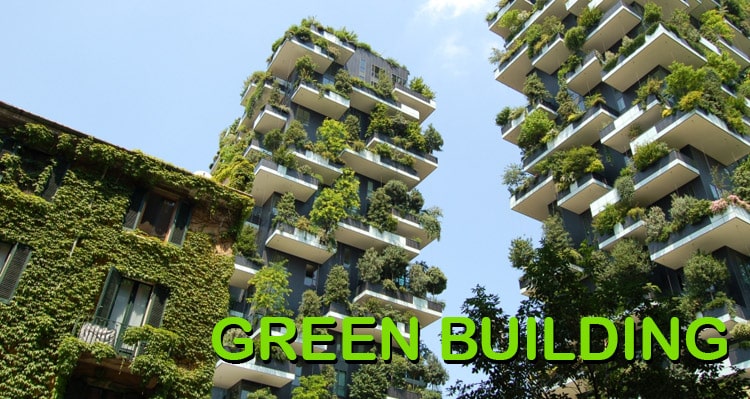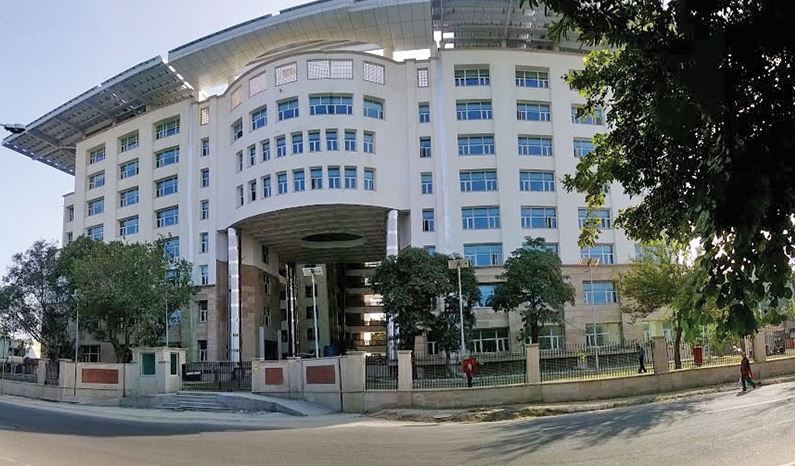While there are several different definitions of Green Building out there, it is commonly accepted as the planning, design, construction, and processes of buildings with several central, foremost reflections: energy use, water use, indoor environmental quality, material section and the building’s effects on its site.

What is Green Building?
A parallel concept is natural building, which is usually on a smaller scale and tends to focus on the use of natural materials that are available locally. It is a holistic concept that begins with the understanding that the built environment can have both a positive and negative impact on the natural environment as well as the people living in the buildings every day. Green building is an attempt to reduce the positive and negative of these effects throughout the life cycle of a building.
Other related topics include sustainable design and green architecture. Sustainability can be defined as meeting the needs of current generations, without compromising the ability to meet the needs of future generations.
The U.S. EPA says “Green building is the practice of creating structures and using processes that are environmentally responsible and resource-efficient throughout a building’s life-cycle from siting to design, construction, operation, maintenance, renovation, and deconstruction. This practice expands and complements the classical building design concerns of economy, utility, durability, and comfort. Green building is also known as a sustainable or high-performance building.”
Also read: Environmental Health and Safety
Green building concept
The `Green Building’ concept is gaining importance in various countries, including India. These are buildings that ensure that waste is minimized at every stage during the construction and operation of the building, resulting in low costs, according to experts in the techniques associated with the `Green Building’ include measures to prevent erosion of soil, rainwater harvesting, use of solar energy, preparation of landscapes to reduce heat, reduction in usage of water, recycling of waste-water and use of world-class energy-efficient practices.
Green building is a whole-system approach to the design and construction of buildings that conserve and build energy, water, and material resources and are more healthy, safe and comfortable. Many think of solar panels when they think of “green” buildings.
Green building responds to the realization that the way we are building everything from houses to skyscrapers is not sustainable. Many health problems today arise from poor indoor air quality and exposure to toxins contained in commonly used construction products. Green building practices can eliminate these health-damaging conditions.
Also read: Industrial Pollution and Effects on Health
Green buildings in India
A green building is one which uses less water, optimizes energy efficiency, conserves natural resources, generates less waste and provides healthier spaces for occupants, as compared to a conventional building. IGBC is a leading green building movement in the country.
The Indian Bureau of Energy Efficiency (BEE) launched the Energy Conservation Building Code (ECBC). The code is set for energy efficiency standards for design and construction with any building of minimum conditioned area of 1,000 m2 and a connected demand of power of 500 KW or 600 KVA. The energy performance index of the code is set from 90 kW·h/sqm/year to 200 kW·h/sqm/year where any buildings that fall under the index can be termed as “ECBC Compliant Building”
Green building materials
Renewable sources: Forests
Reuse from waste: old plumbing, doors, etc.
Solar Tiles: Exist to simply protect a building. They spend a large portion of the day absorbing energy from the sun.
Paper Insulation: Made from recycled newspapers and cardboard then filled with chemical foam. Insect-resistant &fire retardant
Wool brick: Obtained by adding wool and a natural polymer found in seaweed to the clay of the brick, 37% more strength than burnt bricks. Resistant for cold and wet climate
Sustainable Concrete: Crushed glass, Wood chips or slag – a byproduct of steel manufacturing. Reduces the emission of CO2
Green building benefits
- Energy Efficiency
- Water Efficiency
- Efficient Technologies
- Easier Maintenance
- Return on Investment
- Improved Indoor Air Quality
- Waste Reduction
- Temperature Moderation
- Water Conservation
- Economical Construction For Poor
- Healthier Lifestyles and Recreation
- Improved Health.
Examples of green buildings
ITC Green Centre, Gurgaon

Patni (i-GATE) Knowledge Center, Noida

Olympia Tech Park, Chennai

Indira Paryavaran Bhawan


Pingback: Self Help Groups (SHGs) in India - The Mighty Earth